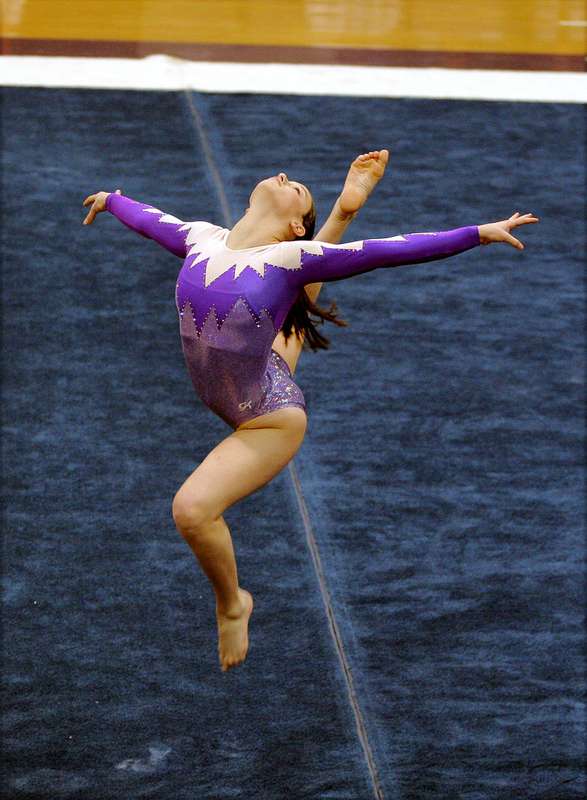Small Amounts of Teen Exercise Reduce Cancer and Heart Deaths Mid-Life
 Teen girls who exercise as little as an hour a week for three months may reduce, to a surprising degree, risk of death from many diseases in adulthood, according to a Vanderbilt University study in Cancer Epidemiology, Biomarkers and Prevention.
Teen girls who exercise as little as an hour a week for three months may reduce, to a surprising degree, risk of death from many diseases in adulthood, according to a Vanderbilt University study in Cancer Epidemiology, Biomarkers and Prevention.
The study, which looked prospectively at 74,941 Chinese women aged 40 to 70, is one of the first of its kind.
“Prior to this report, there has been a large research gap in studying adolescent physical activity energy expenditure and cancer risk,” Somdat Mahabir, Ph.D., M.P.H, told Bioscience Technology. Mahabir, program director of the Environmental Epidemiology Branch of the National Cancer Institute’s Division of Cancer Control and Population Sciences, was not involved in the study.
“Many researchers have long suspected that early life physical activity, especially during adolescence and young adulthood, may decrease risk for adult cancer development,” Mahabir said. “The main surprise element in the current research finding is the magnitude of the risk reduction. The study reported that physical activity energy expenditure, for as little as 1.33 hours per week or less, can translate into substantial health benefits for Chinese women. This amount of physical activity per week can lead to about 17 percent reduced risk for cancer and cardiovascular disease development in adulthood, and 22 percent reduced risk for total mortality. Greater than 1.33 hours per week of physical activity only resulted in modest gains compared to less than 1.33 hours per week.”
Fred Hutchinson Cancer Research Center cancer prevention researcher Anne McTiernan, M.D., Ph.D., offered more cautionary notes. McTiernan, a world expert on the effect of exercise on cancer patients, believes the study is too limited to draw too many conclusions. “It’s a well-done epidemiological study,” she told Bioscience Technology. But for many reasons, “results need to be replicated.”
20 percent lower risk of death
The study’s bottom line: women who exercise quite moderately as adolescents experience a reduced risk of death from cancer and other causes in middle and old age.
 Led by Sarah J. Nechuta, M.P.H, Ph.D., assistant professor of medicine at Vanderbilt Epidemiology Center and Vanderbilt-Ingram Cancer Center, the study looked at data from the Shanghai Women's Health Study. The former is a prospective analysis of women from Shanghai, China, led by Wei Zheng, M.D., Ph.D., at the Vanderbilt Epidemiology Center. The study included self-reported information, at baseline, from the adult women recalling their exercise levels between age 13 and 19, in addition to adult lifestyle-related factors, and mortality outcomes. Interviews were conducted every two to three years.
Led by Sarah J. Nechuta, M.P.H, Ph.D., assistant professor of medicine at Vanderbilt Epidemiology Center and Vanderbilt-Ingram Cancer Center, the study looked at data from the Shanghai Women's Health Study. The former is a prospective analysis of women from Shanghai, China, led by Wei Zheng, M.D., Ph.D., at the Vanderbilt Epidemiology Center. The study included self-reported information, at baseline, from the adult women recalling their exercise levels between age 13 and 19, in addition to adult lifestyle-related factors, and mortality outcomes. Interviews were conducted every two to three years.
After an average of 12.9 years of follow-up, there were 5,282 deaths, including 2,375 from cancer and 1,620 from cardiovascular disease. The team adjusted for socioeconomic factors in adult life, and discovered, as noted, that women exercising as teens for 1.33 hours a week or less had a 16 percent lowered risk for death from cancer, and a 15 percent lowered risk for death from all causes. Women exercising as teens for more than 1.33 hours a week had a 13 percent lowered risk for death from all causes. Women who participated in team sports as teens revealed a 14 percent lowered risk for death from cancer, and a 10 percent lowered risk for death from all causes.
Finally, women exercising as both teens and adults experienced a 20 percent lowered risk for death from all causes.
“To our knowledge, this is the first study to evaluate the association between exercise during adolescence and adult cancer, cardiovascular, and all-cause mortality among middle-aged and older Asian women, carefully considering adult socioeconomic status, lifestyle, and chronic disease history,” Nechuta told Bioscience Technology.
Her team was surprised they did not see a dose-response effect for all-cause mortality after adjustment for adult factors. However, she said, “it is important to note that adult factors, such as adult exercise, body mass index, and chronic diseases, are potentially influenced by adolescent exercise. Adjusting for adult factors in these types of studies may not always be the best approach, as over- adjustment could be a concern. Alternatively, as data were self-reported, measurement error is another potential concern, and more detailed assessments of adolescence exercise in future studies are needed.”
Read More: Exercise May Impact Reduced Disease Activity in Children with MS
Nechuta said a key next step “is to evaluate the role of adolescent exercise in the incidence of [not just death from] major chronic diseases, such as cardiovascular disease and major cancers. This will also help provide more insight into the mechanisms.”
Study only addressed mortality
McTiernan told Bioscience Technology the study’s “main problem,” is that it “only addresses mortality. For cancer, that’s a significant issue, because most people with cancer do not die from cancer, or do so only after many years. So we like to look at incidence of cancer.”
McTiernan said the study also wasn’t large enough to look at specific cancers, “which is very problematic, because an association between physical activity and cancer incidence probably has different mechanisms for different cancers. So I’m not convinced at all that adolescent activity predicts risk of cancer independent of lifelong activity.”
More convincing, she said, was the result on cardiovascular disease mortality. “However, all these behaviors are highly correlated,” she said. “Physical activity at different life periods, weight and weight change over time, and diet. So it’s difficult to say specifically what has the most effect on mortality. I would not take away from this that it’s too late to begin an active lifestyle if you were a sedentary teenager.”
Another limitation, she said, is the fact the study was “limited to postmenopausal women in one geographic/racial/ethnic group, so results would need to be replicated.”
A first
Still, said Mahabir, “the important first steps in this research finding is the use of a prospective cohort study design to demonstrate that it is possible to study early life exposure factors, and link it to not only adult cancer (all cause), but cardiovascular disease and total mortality as well.”
He did not think it was problematic the participants were all one nationality. “The current study population is all Chinese women, but the results may be applicable to all women,” he said.
Mahabir said future prospective cohort studies “will need to put a lot of effort into methodological work to develop valid tools to accurately measure the quantity, type, and intensity of physical activity energy expenditure, including leisure time physical activity in childhood, adolescence, and young adults. In the current study adolescent exercise information was based on recall data because it is a practical technique to get this information. But could also be error prone.”
He also noted future studies should address recall bias, a problem when collecting physical activity data regarding children and young adults.
“Prospective studies should also collect physical activity data multiple times during the usually long follow-up periods that accompany these studies to improve on the accuracy of the timing of the data,” Mahabir said. He added, however, that this would increase cost “and therefore, funding agencies will have to consider the large cost factor in conducting these types of studies.”





